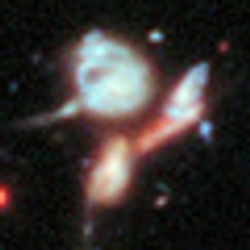Resurrecting the chestnut tree.
Resurrecting the chestnut tree.
As chief scientist of the American Chestnut Foundation (ACF), a group of chestnut enthusiasts and scientists, Hebard has bred thousands of hybrids at the organization’s research farm in Meadowview, Virginia. He crosses descendants of the original American chestnut with the much smaller Chinese variety (Castanea mollissima), which has some natural immunity to the Asian fungus. And after decades of work, he is within reach of his goal, a tall American tree with enough Chinese traits to keep it healthy. Other researchers are trying to attack the blight with viruses or are creating trees that are genetically modified (GM) to resist the fungus, and could be the first GM forest trees released in the wild in the United States. Progress with all three approaches is raising hopes that chestnuts will soon start to flourish again in the forests of the American east. “We’re starting to pull the American chestnut tree back from the brink of extinction,” says Hebard.
This work is an example of human behavior at its best, using our ability to adapt as well as our brains to help another species come back to life. And we aren’t doing just to help the trees. Bringing the chestnut tree back will benefit us as well as other species.
Resurrecting the chestnut tree.
As chief scientist of the American Chestnut Foundation (ACF), a group of chestnut enthusiasts and scientists, Hebard has bred thousands of hybrids at the organization’s research farm in Meadowview, Virginia. He crosses descendants of the original American chestnut with the much smaller Chinese variety (Castanea mollissima), which has some natural immunity to the Asian fungus. And after decades of work, he is within reach of his goal, a tall American tree with enough Chinese traits to keep it healthy. Other researchers are trying to attack the blight with viruses or are creating trees that are genetically modified (GM) to resist the fungus, and could be the first GM forest trees released in the wild in the United States. Progress with all three approaches is raising hopes that chestnuts will soon start to flourish again in the forests of the American east. “We’re starting to pull the American chestnut tree back from the brink of extinction,” says Hebard.
This work is an example of human behavior at its best, using our ability to adapt as well as our brains to help another species come back to life. And we aren’t doing just to help the trees. Bringing the chestnut tree back will benefit us as well as other species.

